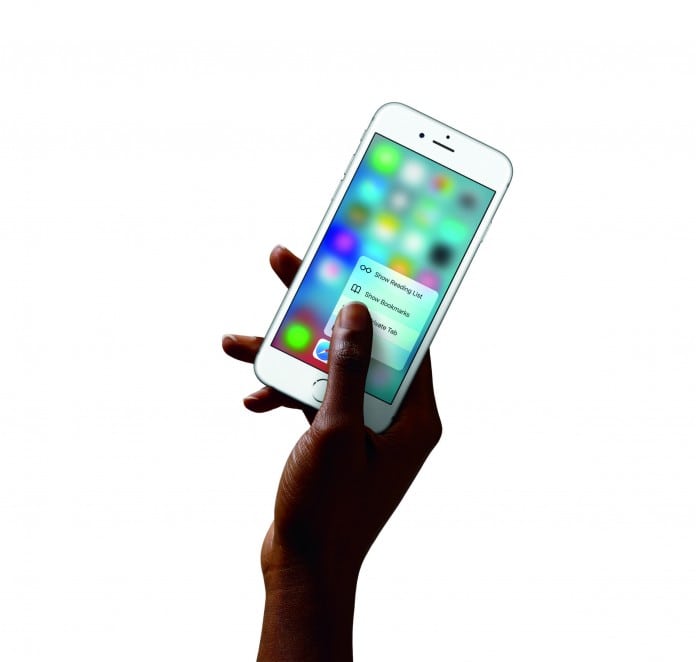
Apple’s advertising pitch for the iPhone 6S is ‘the only thing that’s changed is everything’. It highlights that the brand knows the new phone looks very similar to the last year’s model. Still, there are many upgrades under the hood that make the new gadgets attractive in their own right. The chassis is stronger, the camera sharper and there’s even a completely new way of interacting with the screen.
In terms of pricing, Samsung and the rest of the Android phone manufacturers have been slowly ratcheting up the price of their high-end phones to the point where they are actually eclipsing the iPhone 6S at launch. The Galaxy S6 is now significantly cheaper and so the iPhone 6S has a higher price to live up to. That means some potential buyers will be enamored with the notion of getting the latest tech on the market rather than a six-month-old handset.
So, Apple needs to make sure things like a stronger chassis, animated photos and a new press-able screen are worth the extra outlay when both phones will still work perfectly well in a couple of years’ time.
Design
The iPhone 6S is almost identical to last year’s 6 in every way when it comes to the chassis. The difference is a slightly thicker frame and a little more heft, but it’s really slight.
All cases fit both phones just fine too so, apart from a small S logo on the back of the phone, nobody is going to notice you have got the latest iPhone.
But there will be lots of you upgrading from the iPhone 5S, and in that case you’ll need to be ready for a really big design change. The metallic chassis feels really nice in the hand, with a ceramic-like feeling on the outside.
The iPhone 6S is made of 7000 series aluminum, which is the strongest thing it’s ever used in iPhone construction. The obvious connection people will make is with ‘Bendgate’ last year, when some users claimed their new phone had developed a slight curve in their pocket without much pressure. So, the new iPhone is strong and never going to bend with such pressure.
The front of the phone is now covered in a new level of strength, with a glass that’s far less prone to shattering when dropped on the floor.
In the hand, the iPhone 6S still feels like a feather. Even with the extra 14g over the iPhone it feels lightweight, easy to manipulate and really warrants the price. Samsung’s new Galaxy S6 Edge invokes the same kind of feeling, and with it you don’t mind spending the extra money over a more budget phone.
In terms of design, if you’ve seen the iPhone 6 then you’ve seen the 6S. The volume buttons, the power key, the silencer switch and the speaker are all in the same place as last year, with the grille at the bottom very easy to cover when you’re watching videos or playing games in landscape.
However, combined with the higher price and the continued presence of last year’s model, some retooling of the phone wold have make it seem more attractive.
Screen
The screen on the iPhone 6S seems to be identical to last year’s – a 4.7-inch affair with 750p resolution, which keeps it firmly in the ‘Retina’ range that the firm debuted all the way back with the iPhone 4.
The iPhone 6S display is clear, bright, laminated to the glass and insanely colorful. The first time I saw it on the iPhone 6 I thought it was a fake picture stuck on top of a dummy unit, such was the clarity on offer.
So to use the same thing on the iPhone 6S makes sense – after all, the lower pixel count means it can be thinner and the battery can last longer, thanks to having fewer pixels to drive.
But there are some things missing: for instance, the contrast ratio (the difference between the brightest and darkest parts of the screen) is still poor, with the black areas looking a little grey. Samsung’s Galaxy range predominantly uses OLED technology, which offers ‘true’ blacks and high brightness and packs a much better visual punch, and would have suited the iPhone down to the ground.
The sharpness in side by side tests is clearly lower too – the 326 pixels per inch is very low even compared the 401ppi of the iPhone 6S Plus – and most other models are over 500ppi to bring really, really clear displays.
Given OLED technology is used in the Apple Watch – and admittedly it looks brilliant – it’s a shame the same thing couldn’t have been done with the iPhone 6S.
It’s important not to get too hung up on screen resolution in a phone – after all, if it’s not serving a purpose (hey, Sony?) then it’s just wasting battery. But the industry has moved on, and the higher pixel densities on offer are starting to really bring something to the table, with apps and general use looking pin sharp.
Here’s hoping the iPhone 7 makes a massive jump forward to join the rest of the pack.



































